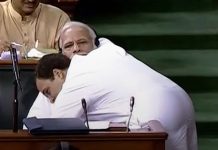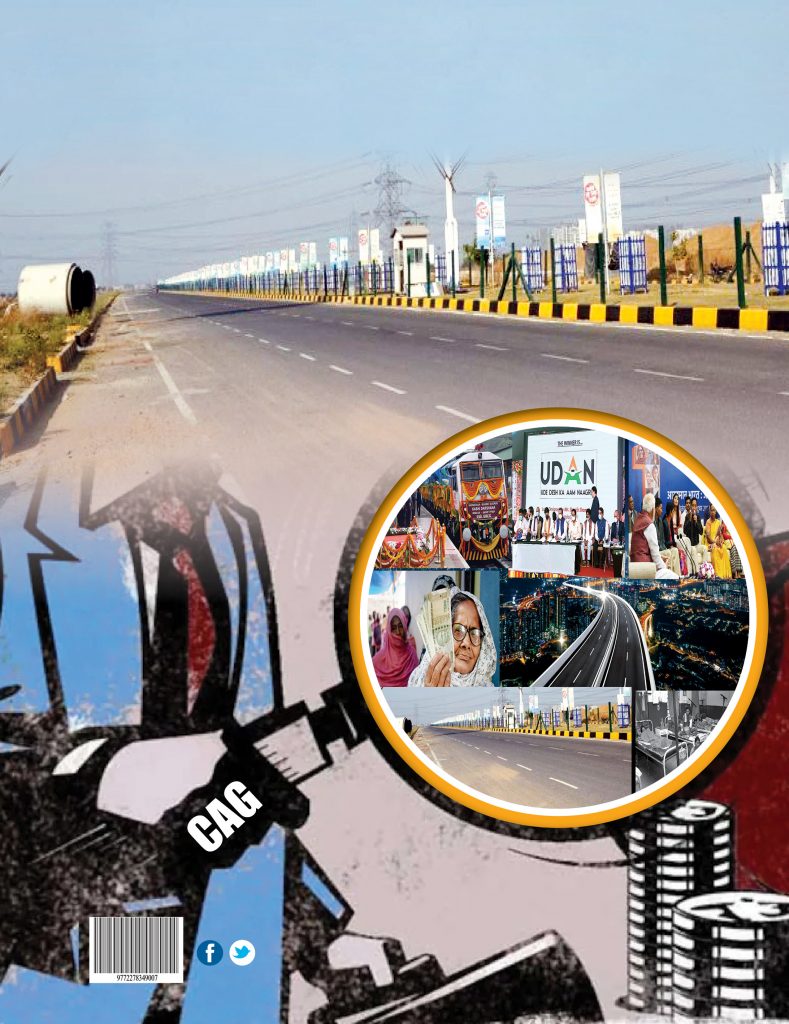
While exposing serious procedural and financial irregularities in the performance of the government’s flagship schemes, the regulator underlines a critical need for a robust oversight mechanism to safeguard public funds, and ensure effective execution of government initiatives, writes Mudit Mathur.
Comptroller and Auditor General (CAG) has red flagged and exposed serious procedural and financial anomalies in the functioning and performance of Prime Minister Narendra Modi’s flagship schemes. Financial discrepancies in key projects and welfare schemes have triggered harsh criticism from the opposition parties, and have put a question mark on the hyperbolic electoral promises of PM Modi with the people of India for providing corruption-free and transparent governance, and proper allocation of public funds.
The CAG has released 12 audit reports which were tabled in Parliament as a part of constitutional requirement under Article 151 of the constitution of India during the last phase of the noisy Monsoon Session, which was adjourned sine die last fortnight. These reports shed light on financial discrepancies and call for increased transparency and accountability in public governance.
The Constitution of India has mandated the CAG, the apex public funds auditor, to act as a watchdog and to keep strict vigil on revenue receipts and spending of public funds, and report to Parliament if any misuse or misappropriation occurs from the consolidated funds of Union and state governments.
While auditing funds utilisation of various priority sectors, it highlighted major fiscal flaws in the implementation of “Bharatmala”, “Ayuashman Bharat”, “UDAN” and “Swadesh Darshan Scheme” besides red flagging diversion of National Social Assistance Programme (NSAP) funds meant for pension for BPL people to publicity of other schemes of the ministry. The auditor also underlined the decline in operating ratio of Railways performance besides incurring unsanctioned expenditure in 2021-22 financial year, the trend which continued despite being pointed out by the CAG earlier.
‘Bharatmala Pariyojana’ (BPP-I)
In its audit report on ‘Implementation of Phase-I of Bharatmala Pariyojana’ (or BPP-I) — conducted for the period 2017-18 to 2020-21, the Audior highlighted serious anomalies in the implementation of highway projects under Bharatmala Pariyojana Phase-I (BPP-1). The report quotes:
“Instances of irregularities in award of projects by implementing agencies were observed in clear violation of the prescribed processes of tendering, viz., successful bidder not fulfilling tender condition or bidder selected on the basis of falsified documents, award of works without there being approved detailed project reports or based on faulty detailed project report,” it said.
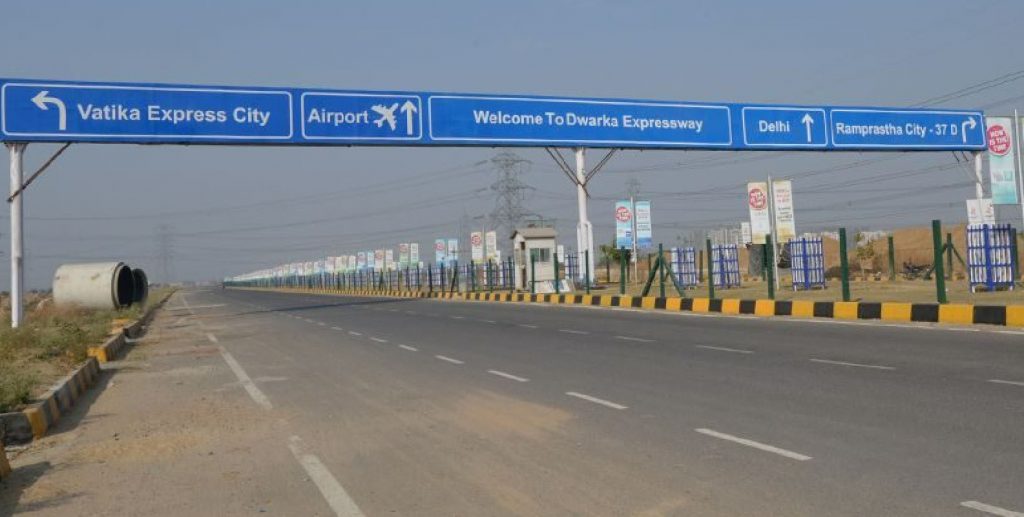
The report also found huge overrun costs in the Dwarka Expressway project which was prioritised to decongest NH-48 between Delhi to Gurugram by developing it into a 14-lane national highway.
In October 2017, Cabinet Committee on Economic Affairs (CCEA) approved a new umbrella program called Bharatmala Pariyojana for the development of 74,942 km of national highways. The primary focus of the program was on optimising efficiency of the movement of freight and people across the country. Out of above length, national highways length of 34,800 km, including the Residual National Highways Development Program (NHDP) length of 10,000 km, was approved under Phase-I of Bharatmala Pariyojana (BPP-I), for development up to September 2022, at an investment outlay of Rs 5,35,000 crore.
There are seven components under the Pariyojana viz., Economic Corridors, Inter-Corridor and Feeder Roads, National Corridors/National Corridors Efficiency Improvements Programme, Border and International Connectivity Roads, Coastal and Port Connectivity Roads, Green-field Expressways and Residual NHDP projects. The Pariyojana is implemented by Ministry of Road Transport and Highways (MoRTH) through its implementing agencies viz., National Highways Authority of India (NHAI), National Highways and Infrastructure Development Corporation Limited (NHIDCL), Road Wing of MoRTH and State Public Works Departments.
Dwarka Expressway
The report notes that Dwarka Expressway was initially planned by the Haryana government under its Gurgaon-Manesar Urban Construction Plan-2031. For that, Haryana acquired right of way (width of a road) of 150 metres to construct the main carriage way of 25 metres, with a 7-m-wide median and a dedicated utility corridor for trunk services.
“However, with no further progress being made by the Haryana government, this project was later approved in BPP-I by CCEA,” the report noted. For this purpose, 90 m right of way was handed over by Haryana to the National Highways Authority of India (NHAI) free of cost, the audit report stated.
The report highlighted, “The audit observed that up to 70-75 metre right of way was required to build a 14-lane national highway at grade. However, for no reasons on record, the project in Haryana region, where its length was 19 km, was planned with eight-lane elevated main carriageway and six lanes at grade road, when NHAI already had 90 m right of way and the same was sufficient for building 14 lanes at grade…. Due to such massive structures, this project, constructed on EPC (Engineering, Procurement, and Construction) mode, for a length of 29.06 km had sanctioned civil construction cost of Rs 7,287.29 crore i.e., Rs 250.77 crore/km as against per-km civil construction cost of Rs 18.20 crore approved by CCEA…”
MoRTH prioritised (November 2018) the construction of Dwarka Expressway by dividing it into four projects. NHAI approved (January-March 2018) the construction of these four projects with a civil cost of Rs 7,287.29 crore. The scheduled completion dates of these projects were falling between November 2020 to September 2022. These projects had achieved physical progress ranging between 60.50 per cent to 99.25 per cent as on 31 March 2023.
Dwarka Expressway was prioritised to decongest NH-48 between Delhi to Gurugram by developing it into 14 lane national highway running parallel to NH-48 at per km cost of Rs 250.77 crore as against Cabinet Committee on Economic Affairs (CCEA) approved per km cost of Rs 18.20 crore for National Corridors/National Corridors Efficiency Improvements Programme, under which this project was being constructed.
As per the project’s feasibility study, the average daily traffic of 3,11,041 moving on NH-48 between Delhi to Gurugram consisted of 2,88,391 passenger vehicles (i.e., 92.72 per cent). Of these 2,32,959 passenger vehicles (i.e., 80.78 per cent) were inter-city traffic only i.e., the traffic not crossing the Kherki-Daula toll on NH-48 (Delhi-Gurugram traffic only which did not cross Gurugram boundary).
While reviewing the prioritisation of Dwarka Expressway under BPP-I, the Audit observed the following:
No detailed project report (DPR)
The individual projects of Dwarka Expressway were appraised (December 2017/February 2018) by Project Appraisal & Technical Scrutiny Committee and approved (January/March 2018) by NHAI Board without any detailed project report for the project being prepared (not prepared till date) and even the final feasibility report of the project was submitted (September 2018) after approval of the project by NHAI.
The audit observed that the four projects of Dwarka Expressway were appraised and approved by Competent Authority based on a brief presentation by the concerned technical division of NHAI. Thus, Dwarka Expressway was appraised and approved without any detailed project report. Effects of non-preparation of detailed project report were manifested in following ways:
“Inspite of sufficient right of way being available with NHAI for constructing all 14 lanes of Dwarka Expressway at grade, for no reasons on record, it was being constructed with eight lane elevated road and six lane at grade road resulting in a very high per km civil cost of Rs 250.77 crore for this project”;
“The planned toll rates and tolling mechanism of Dwarka Expressway might hinder the recovery of capital cost of the project and might also result in undue financial burden on commuters moving between Delhi-Gurugram (up to Kherki Daula toll plaza)”;
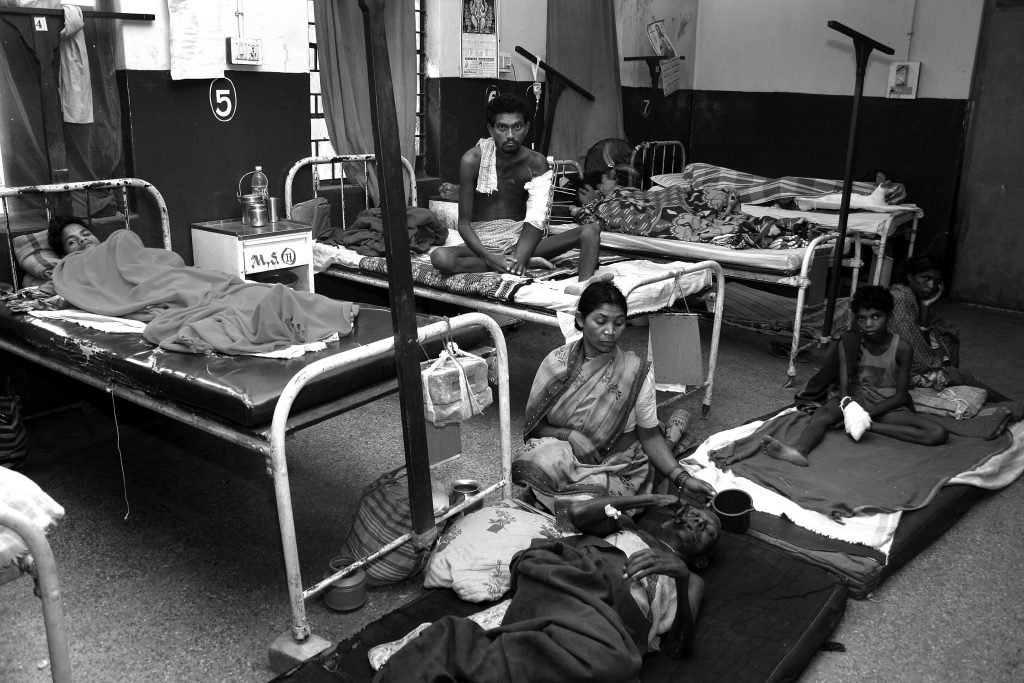
“Lane configurations of Dwarka-Expressway were determined without analysing the development of competing infrastructure in the form of development of RRTS SNB”;
“Inspite of heavy Delhi-Gurugram traffic, which was expected to use the six lane at grade portion of this project falling in Haryana region, this at grade portion was being constructed with sub-optimal specifications of 20 Million Standard Axles traffic; and California Bearing Ratio value of soil estimated, in feasibility study of Dwarka Expressway, was on lower side as compared to California Bearing Ratio value considered by contractor resulting in savings to the contractor in the cost of construction.”
“BJP’s corruption & loot is taking the nation on a Highway to Hell ! In a scathing report against Modi Govt, CAG has pointed that Bharatmala Pariyojana is being built with innumerable deficiencies, non-compliance of outcome parameters, clear violation of tender bidding process, and huge funding mismanagement,” said Congress president Mallikarjun Kharge in his statement on X (formerly Twitter).
“One of the stark examples of the fraud, in this scheme, is the Dwarka Expressway. CAG has exposed that the cost of this project was originally estimated at Rs 528.8 Cr but later zoomed to Rs 7287.2 Cr — a whopping 1278% increase!! Dwarka Expressway was appraised and approved without any detailed project report,” Kharge commented.
“The planned toll rates shall hinder the recovery of capital cost of the project and result in undue financial burden on commuters. Lane configurations of Dwarka-Expressway were determined without analysing the development of nearby competing infrastructure. Construction was done with suboptimal specifications,” questioned Kharge, adding, “Pradhan Mantri ji, You need to look within, before you harp about corruption against your opponents, because you are overseeing it yourself!! In 2024, INDIA will make your government accountable.”
Responding to a political row erupted over the CAG report which red flagged the high cost of construction of the Dwarka Expressway, Union Road Transport and Highways Minister Nitin Gadkari rejected the auditor’s observation that Rs 250 crore was spent per kilometre. CAG report mentioned 29.06 kilometres long Dwarka Expressway is being built at an exorbitant cost of Rs 250.77 crore per kilometre, exceeding the Rs 18.2 crore per kilometre that was sanctioned by the Cabinet Committee on Economic Affairs (CCEA).
Refuting the allegations of “high cost of construction”, Nitin Gadkari said that the Dwarka Expressway was not 29 kilometres-long as mentioned in the CAG report but around 230 kilometres-long, as it had tunnels included in it as well.
Gadkari said that according to this, Rs 9.5 crore was being spent per kilometre. Gadkari claimed that he told the same to the CAG officials, and they were “convinced” by the clarification. However, he said, they still went ahead with the report.
Gadkari has conveyed his displeasure with the lopsided attitude adopted by certain officials responsible for responding to queries raised by the CAG with regard to the cost of construction of the Dwarka Expressway at a high-level review meeting. The minister also directed to fix the responsibility for this lapse on the part of senior concerned officials of his ministry.
Commuters pinched for Rs 150 cr at toll plazas
The CAG report on the Union Ministry of Road Transport and Highways Toll Operations of National Highways Authority of India (NHAI) in Southern India has found that at five toll plazas, a total amount of Rs 132.05 crore was collected from commuters in violation of toll plaza rules.
The audit was conducted on 41 randomly selected toll plazas across the five southern states of Andhra Pradesh, Karnataka, Tamil Nadu, Kerala and Telangana which stated that due to “non-implementation of NH Fee Amendment Rules 2013 dated 16 December 2013 with respect to upgradation of existing four lane highways, NHAI continued to collect user fee in three toll plazas (namely Nathavalasa, Chalageri and Hebbalu) during delayed period of construction though the amended rule stated that no user fee shall be levied for the delayed period.”
The report said that this resulted in the collection of user fees of Rs 124.18 crore during the period May 2020 to March 2021 in “violation of the amended toll fee rules”. The report found that at the Paranur toll plaza, the NHAI delayed reduction in user fee to 75% of fee applicable. At the Madpam toll plaza, the NHAI annually revised the user fee despite the stipulation of no revision during upgradation as per the amended Fee Rules. NHAI collected Rs 7.87 crore from road users on the two toll plazas from August 2018 to March 2021.
“Thus toll collection in these five toll plazas led to undue burden of Rs 132.05 crore on road users,” the report stated. The report also found that NHAI collected excess toll fees of Rs 22.10 crore from road users during 2017-2018 to 2020-2021 at the Paranur public-funded toll plaza.
A bridge had been constructed in 1954 and a user fee was being collected for it, again in violation of the NH Fee Second Amendment Rules 2011. Under the rules, since the bridge was constructed prior to 1956, the user fee was not to be levied.
The audit also found that delays in toll collection according to time limits prescribed by NH Fee Rules, 2008, in four stretches of public funded projects led to a loss of NHAI revenue amounting to Rs 64.60 crore.
AB-PMJAY: Howlers galore
PM-JAY is much flaunted to be the world’s largest fully government-funded health insurance scheme that was launched in September 2018 just prior to 2019 Lok Sabha elections as a major booster plank of welfare measures. The scheme aims to provide free healthcare to over 50 crore poor families. The scheme provides funding of up to Rs five lakh per family annually in cases of medical emergencies.
The CAG in its report revealed alarming facts that all is not well with the government’s flagship health insurance scheme, Ayushman Bharat Pradhan Mantri Jan Arogya Yojana (AB-PMJAY). It has found glaring loopholes in implementation of the scheme including misappropriation of funds, fake accounts, releasing funds without proper evidence and even claims paid in the name of patients who were already dead!
In its Performance Audit of Ayushman Bharat — PMJAY, the CAG said that overall, 7,49,820 beneficiaries were linked with a single mobile number in the Beneficiary Identification System (BIS) of the scheme. Also, 4,761 registrations were made against seven Aadhar numbers and non-existent hospitals were enrolled under a public health insurance scheme.
“Data analysis of the BIS database revealed that there were large numbers of beneficiaries registered against the same or invalid mobile number. Overall, 1119 to 7,49,820 beneficiaries were linked with a single mobile number in the BIS database…,” the report states.
Besides 7,49,820 beneficiaries were linked with 9999999999, 1,39,300 beneficiaries were linked to the phone number 8888888888; and 96,046 others were linked to the number 9000000000. There were also at least 20 cell phone numbers to which between 10,001 and 50,000 beneficiaries were linked, the report revealed.
The report stated that 7.87 crore beneficiary households were registered, constituting 73% of the targeted households of 10.74 crore (November 2022). Later, the government increased the target to 12 crore. The report noted, “Mobile numbers are significant for searching records related to any beneficiary in the database, who may approach the registration desk without the ID.”
“In case of loss of e-card, identification of the beneficiary may also become difficult. This may result in denial of scheme benefits to eligible beneficiaries as well as denial of pre- and post-admission communication causing inconvenience to them.”
Interestingly, the report of the constitutional audit agency found that such cases are relatively high in Kerala, which ranks first in the NITI Aayog Health Index and other social health parameters.
The scheme offers that a patient can avail of treatment only once without an Aadhar or an Aadhar enrolment slip. They are further mandated to provide a signed declaration saying that they will produce the Aadhar before their next treatment. However, the CAG report found that 8.2 lakh patients availed of treatment for two or more times without an Aadhar or any other biometric proof for a cumulative claim settlement worth Rs1,678.68 crore.
Kerala cases
Kerala tops the list with the highest number of such cases. The State saw 2.02 lakh patients availing treatments two or more times without biometric verification between September 2018 and March 2021. Cumulatively, they were paid Rs 472.64 crore. It was followed by Chhattisgarh which saw Rs 234.86 crore in claim payments to such patients.
The report also highlighted something rather weird. Thousands of claims are made against patient names, who were shown ‘dead’ earlier. “The audit noted that patients earlier shown as ‘died’ in the system continued to avail treatment under the Scheme. Data analysis of mortality cases revealed that 88,760 patients died during treatment specified under the Scheme. A total of 2,14,923 claims shown as paid in the system, related to fresh treatment in respect of these patients [sic],” reveals the CAG report.
In 3,903 of such cases, claims amounting to Rs 6.97 crore pertaining to 3,446 patients were paid to hospitals. Strangely, in these cases too, Kerala tops the list. In the state, such claims were made in the names of 966 ‘already dead patients”. They were paid a claim amount worth Rs 2.61 crore. Madhya Pradesh comes next with 403 claims in the name of dead patients.
“The implementation of the Scheme needs improvement in light of the findings made in the report. It is expected that the compliance to the observations and recommendations made in this Report will help in improving the implementation of the Scheme,” the report added.
UDAN a non-starter
This CAG Report contains significant results of the compliance audit of Regional Connectivity Scheme – UDAN of the Ministry of Civil Aviation launched in pursuance of the provisions of the National Civil Aviation Policy 2016. The instances mentioned in the report are those which came to notice in the course of audit for the period from October 2016 to March 2021; figures relating to the period up to March 2023 have been updated, wherever necessary.
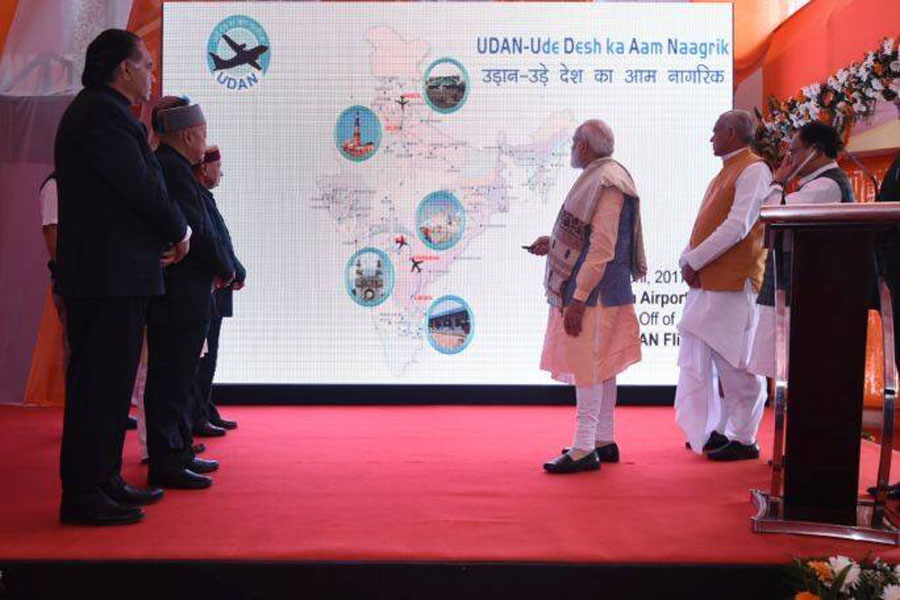
National Civil Aviation Policy (NCAP), 2016 envisaged a Regional Connectivity Scheme (RCS) to enhance regional air connectivity through fiscal support and infrastructure development. Accordingly, the Ministry of Civil Aviation (MoCA) launched (October 2016) the scheme – Regional Connectivity Scheme – UDAN (Ude Desh ka Aam Naagrik). The scheme aimed to promote affordability of regional air connectivity through a series of measures.
Up to UDAN-3, 52 per cent (403 out of 774 routes) of the awarded routes could not commence operations and from the 371 commenced routes, only 112 routes (30 per cent) completed the full concession period of three years. Further, out of these 112 routes, only 54 routes (i.e., 7 per cent of the awarded routes) connecting 17 RCS Airports could sustain the operations beyond the concession period of three years, as of March 2023. The scheme launched in 2016 is aimed at promoting affordability of regional air connectivity and refurbishing underserved airports.
“Further, out of these 112 routes, only 54 routes (7% of the awarded routes) connecting 17 RCS [regional connectivity scheme] airports could sustain the operations beyond the concession period of three years, as of March 2023,” the report stated.
The report also found “significant delays” in revival or development of identified RCS airports out of the budgetary support sanctioned by Cabinet Committee on Economic Affairs in March 2017. For accounting of transactions of Regional Air Connectivity Fund, Standard Operating Procedure (SoP) as per laid down procedure of CAG of India was not formulated even after a lapse of more than five years. Further, the accounts of Regional Air Connectivity Fund Trust (since inception) were also not submitted for CAG audit.
“Out of the 116 airports/heliports/water aerodromes where expenditure was incurred, operations commenced at only 71 (61%) airports/heliports/water aerodromes,” the report said. “Operations could not be commenced or were discontinued at 83 airports/heliports/water aerodromes even after incurring an expenditure of Rs 1,089 crore.”
Swadesh Darshan Scheme
The Swadesh Darshan Scheme is a 100 per cent Central Sector flagship scheme launched (January 2015) by the Ministry of Tourism for the development of tourism infrastructure in the country. The Ministry identified 15 tourist circuits for development under the scheme and a total of 76 projects were sanctioned under the scheme since its inception.
The scheme was formulated for integrated development of theme-based tourist circuits. The Ministry identified 15 tourist circuits for development under the scheme, namely Himalayan circuit, North-East circuit, Krishna circuit, Buddhist circuit, Coastal circuit, Desert circuit, Tribal circuit, Eco circuit, Wildlife circuit, Rural circuit, Spiritual circuit, Ramayana circuit, Heritage circuit, Tirthankar circuit and Sufi circuit.
“The Ministry launched the Scheme despite objections of the Planning Commission/Ministry of Finance and did not act upon the recommendation of the Standing Finance Committee to formulate an Umbrella scheme by merging the schemes having overlapping objectives. As a result, there was overlapping of scope across various schemes implemented by the Ministry. Most of these schemes were still ongoing in 2021-22. Thus, the objective of the government to contain the proliferation and rationalisation of schemes was not achieved,” CAG report said.
The Ministry of Tourism sanctioned funds for the Swadesh Darshan scheme without the cabinet approval. A performance audit of the Swadesh Darshan Scheme implemented by the Ministry of Tourism for the period from the scheme’s inception in January 2015 to March 2022 revealed that while the scheme was launched with an initial outlay of Rs 500 crore, the Ministry continued to sanction projects and the amount sanctioned had exceeded Rs 4,000 crore by 2016-17.
The funds were sanctioned by the ministry “without obtaining approval of the Cabinet, which was necessary for sanctioning projects costing above Rs 1,000 crore.” The report added that the scheme was implemented “without conducting any feasibility study.”
The report said that the ministry identified 15 tourist circuits for development under the scheme and a total of 76 projects were sanctioned under the scheme since its inception. “Non-preparation of the feasibility report resulted in poor identification of sites and deficiencies in execution of projects, such as delay in completion of the projects and non-utilisation of funds,” CAG report stated.
“As on 31 March 2022, the total expenditure incurred under the rural circuit was only Rs 30.84 crore, which constituted only 0.73% of the total expenditure incurred under the scheme.” The rural circuit did not receive suitable attention from the ministry because it did not develop a formal mechanism for evaluation and approval of projects. There was a lack of “proper planning on the part of the ministry” as it did not ensure the preparation of a national or state-level plan before launching the scheme.
Promoting schemes at NSAP expense
The CAG report on the Performance Audit of the National Social Assistance Programme – Union Government (Civil), Ministry of Rural Development, has found that funds meant to publicise the scheme were diverted for publicity of other schemes by the ministry. The audit covered the period between 2017-18 to 2020-21.
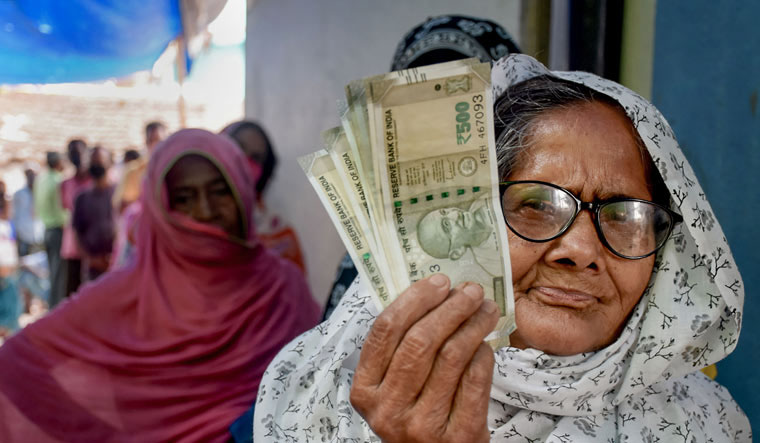
The National Social Assistance Programme (NSAP) is meant to provide social assistance benefits to the below poverty line (BPL) households in the case of old age, disabled, widows, and the death of the primary breadwinner.
The NSAP includes five sub-schemes, of which, three are pension schemes, including the Indira Gandhi National Old Age Pension Scheme (IGNOAPS), Indira Gandhi National Widow Pension Scheme (IGNWPS), and Indira Gandhi National Disability Pension Scheme (IGNDPS). The other two sub-schemes are the National Family Benefit Scheme (NFBS) – a one-time assistance to the bereaved family in the event of the death of the breadwinner, and the Annapurna scheme – food security to the eligible old age persons who have remained uncovered under IGNOAPS.
The report said that funds of Rs 2.83 crore earmarked for IEC (Information, Education, and Communication) activities under NSAP were diverted for “campaigning of other schemes”. The audit reported that the absence of a prescribed procedure for proactive identification of beneficiaries coupled with the lack of IEC activities resulted in delayed/non-coverage of eligible beneficiaries from the ambit of NSAP and non-achievement of the objective of universal coverage of beneficiaries.
The report said that the Ministry of Rural Development in January 2017 decided to campaign through hoardings in states and Union territories for giving due publicity to all programmes/schemes of the Ministry. “Administrative approval and financial sanction of Rs 39.15 lakh was taken (June 2017) for a publicity campaign through hoardings with a limit of 10 hoardings at each capital city of the state and UT.
Administrative approval and expenditure sanction of Rs 2.44 crore was taken (August 2017) for campaigning Gram Samriddhi, Swachh Bharat Pakhawada and publicity material of multiple schemes of the Ministry through five hoardings in each District for 19 states. “Subsequently, work orders were issued in June and September 2017 and publicity campaigns were to be undertaken in September 2017.
“The funds for the said campaign were stated to be available under National Rural Employment Guarantee Scheme and were approved by the competent authority to be incurred under the same head; however, the audit observed that funds were actually incurred from social security welfare-NSAP schemes,” the report said.
“However, the advertisement of only PMAY-G (Pradhan Mantri Awaas Yojana- Gramin) and DDU-GKY(Deen Dayal Upadhyaya Grameen Kaushalya Yojana) schemes were mentioned in the work order and no schemes of NSAP were included in the work order. “Further, the campaigns were to be undertaken by DAVP (Directorate of Advertising & Visual Publicity) under intimation to the department; however, the payment to DAVP was made without confirmation of the execution of the work.”
“Later, planned IEC activities under NSAP were not undertaken as envisaged and funds of Rs 2.83 crore were diverted for campaigning in respect of other schemes of the Ministry. Hence, IEC activities intended to create awareness among potential beneficiaries of NSAP could not be taken up even though there was earmarking of funds for IEC activities.”
In addition, the report said that while the scheme is meant to include universal coverage, the report found that it was being implemented in a “demand-driven mode where benefits were provided to only those beneficiaries who applied for pensions/benefits under NSAP themselves”. The report also found “idling of funds of Rs 18.78 crore”.
It said that while one of the key principles of NSAP is regular monthly disbursement of pension, in eight States/UTs, funds received under NSAP were lying idle either with the states/Union territories concerned or with implementing agencies. This included Bihar, Sikkim, Arunachal Pradesh, Goa, Kerala, Andaman and Nicobar Islands, Jammu and Kashmir, and Tripura. The report found “Rs 18.78 crore were lying idle in eight states for a period ranging from one to five years”.
“The reasons for idling of funds were such as the release of funds at the fag end of the financial year, non-revalidation of funds from administrative department, duplication and non-permissible age limit of the beneficiaries,” it said. The report added that this also shows lack of financial monitoring on part of the states/UTs which manifested in irregular payment of pension to the beneficiaries.
Railway spent Rs 6082 cr sans sanction
The Indian Railways’ finances have slipped into a “concern zone”, with the national railway operator spending Rs 107 to earn Rs 100 during 2021-22 owing to higher appropriation to fund pensions, CAG said in its report containing audit observations on matters arising from examination of Finance Accounts of Indian Railways for the year ended 31 March 2022. It focuses on the financial health of the Railways based on various parameters and contains the audit findings on the appropriation of its accounts.
While the capital expenditure of Railways has been on the rise in recent years, its financial performance has shown a decline in the “excess of earning over expenditure”, or surplus, in the six years from 2016-17 to 2021-22.
The CAG report on the financial audit of the accounts of the Union government found that the Ministry of Railways had incurred unsanctioned expenditure. During the financial year (FY) 2021-22, the ministry had incurred unsanctioned expenditure of Rs 6082.77crore, encompassing 1,937 cases.
In 2021-22, Railways’ finances slipped into ‘concern zone’ against the target of 96.15 per cent in the Budget Estimates, the Operating Ratio of Railways was 107.39 per cent in 2021-22. As compared to the Operating Ratio of 97.45 per cent during 2020-21, there was deterioration in 2021-22.
“Similar audit comments were made in the previous C&AG audit reports for the year 2018-19 to 2020-21. Thus, it is evident that no steps had been taken by the Ministry to reduce the cases of unsanctioned expenditure despite being pointed out in the previous CAG audit reports,” it said.
CAG audit found inadequate generation of internal resources by Railways resulted in greater dependence on Gross Budgetary Support (GBS) and Extra Budgetary Resources (EBR). The amount of EBR was Rs 71,065.86 crore, which represented a decrease of 42.31% as compared with 2020-21.
The report also said passenger fares are cross-subsidised using profits generated on freight operations. This cross-subsidisation continues to be a concern, as railways has not been able to raise fares in the sleeper class.
According to the CAG, in FY22, the railways’ loss decreased over the previous year but the entire profit of Rs 36,196 crore from freight traffic was utilised to cross-subsidise and compensate the loss on operation of passenger and other coach services.
Trend analysis of object head wise expenditure in respect of Department of Agriculture, Cooperation and Farmers’ Welfare revealed persistent savings of 40% to 96% of the Budget Estimate during the last five years. The report said that this indicates deficient planning at the Budget Estimate stage without taking into account previous years’ trends.
All these reports collectively highlight the critical need for accountable governance, adherence to financial guidelines, and the implementation of robust oversight mechanisms to safeguard public funds and ensure the effective execution of various government initiatives.








